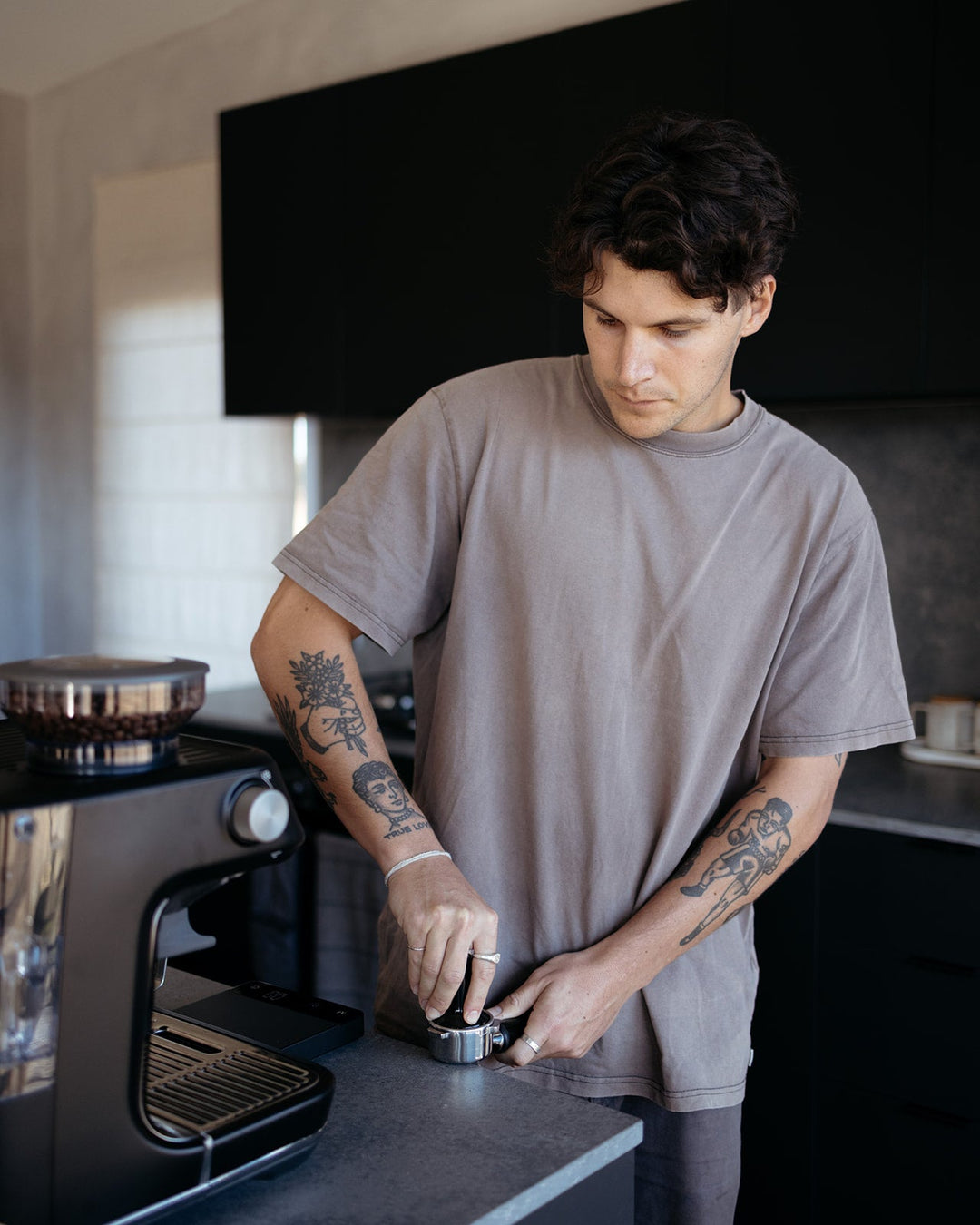Coffee Beans 101: Every Little Thing You Need to Understand About Espresso and Blended Coffee Beans
When it comes to coffee, recognizing the nuances of espresso and mixed beans can change your everyday mug. From the growing process to toasting strategies, every step plays a role in your coffee experience.
Comprehending Coffee Beans: Varieties and kinds
When diving right into the globe of coffee, recognizing the kinds and varieties of coffee beans is vital for every lover. Arabica beans are understood for their smooth, complicated flavors and lower high levels of caffeine material, making them a preferred among coffee enthusiasts.
Ethiopian Yirgacheffe provides intense flower notes, while Colombian beans give a healthy flavor account. By familiarizing on your own with these beans and their flavors, you'll boost your coffee experience and make more enlightened options in your brewing trip.
The Growing Refine: From Seed to Bean
When you explore the journey of coffee, all of it starts with seed choice techniques that establish the foundation for quality. From there, cultivation and collecting play necessary roles in guaranteeing the beans thrive. Handling methods transform those harvested cherries into the coffee beans you enjoy.
Seed Choice Techniques
Selecting the best seeds is crucial for producing high-grade coffee beans, as it lays the structure for the entire growing process. You should begin by choosing seeds from reliable sources that prioritize high quality and genetic diversity. Seek selections recognized to thrive in your details climate and dirt problems. Pay attention to the seed's age and storage space conditions, as fresh seeds have a tendency to germinate far better. When possible, choose organic seeds to minimize exposure to harmful chemicals. Consider the condition resistance of different varieties, as this can significantly affect your return. Don't think twice to consult with neighborhood farmers or professionals to gain insights right into the best seed choices for your area. This expertise will certainly enhance your coffee-growing experience.
Growing and Harvesting
As you nurture your coffee seeds into thriving plants, understanding the growing and harvesting process is vital for achieving the best taste and top quality. Begin by growing your seeds in well-draining dirt, ideally in a shaded location to protect them from direct sunlight.
When it comes time to harvest, look for ripe cherries, which typically turn a vibrant red. Hand-picking is typically the very best method to ensure just the ripest cherries are picked. Timing is necessary; collecting also late or also very early can affect the taste profile of your beans. Welcome perseverance and treatment, as this is where high quality begins.

Handling Techniques Clarified
Once you've collected your coffee cherries, the following essential action is processing them to transform those dynamic fruits into the beans you'll make. There are two primary techniques: the wet process and the completely dry process. In the dry procedure, you spread out the cherries out in the sun to dry, enabling the fruit to ferment and impart one-of-a-kind flavors to the beans. On the various other hand, the damp procedure entails removing the fruit quickly and fermenting the beans in water, resulting in a cleaner preference. After handling, the beans are hulled, sorted, and usually dried once more. Each approach influences the taste profile, so try out both can aid you discover your preferred mixture. Comprehending these approaches is crucial to enjoying your coffee experience.
Toasting Techniques: Exactly How Taste Is Created
When it involves roasting coffee beans, recognizing roast degrees is vital to exposing their one-of-a-kind tastes. Each roasting technique impacts the scent and improves the taste advancement process, providing you a richer coffee experience. Let's check out exactly how these aspects collaborated to raise your day-to-day mixture.
Roast Degrees Clarified
Roast levels play a necessary duty in shaping the flavor account of your coffee. By recognizing these degrees, you can better choose a coffee that matches your taste preferences. Experiment with different roasts to find which one reverberates with you, improving your overall coffee experience and enjoyment.
Effect on Fragrance
The roast level not only influences the taste of your coffee but additionally considerably influences its aroma. When you choose a light roast, you'll usually notice intense, floral notes that can make your coffee scent dynamic and fresh. As the beans dim, the fragrance shifts; a tool roast draws out much more well balanced, caramelized fragrances, while a dark roast tends to feature strong, great smoky touches. Each toasting technique releases different unpredictable substances, shaping exactly how your coffee scents. In addition, the freshness of the beans plays a vital duty; fresh baked coffee releases much more aromatic oils, boosting that attracting fragrance. So, focus on the roast level-- it's essential to revealing the complete fragrant experience of your mixture.
Taste Development Refine
As you explore the taste development procedure, you'll find that roasting techniques play an essential duty in shaping the taste account of your coffee. The roasting temperature level and time straight influence the level of acidity, sweet taste, and anger of the beans. Light roasts preserve more of the bean's initial flavors, highlighting fruity and floral notes. Medium roasts equilibrium acidity and body, supplying a well-rounded taste. Dark roasts, on the other hand, highlight strong, great smoky features while diminishing the bean's intrinsic qualities. During toasting, hop over to these guys chain reactions, like the Maillard response and caramelization, transform the beans and boost their complexity. Trying out various roasting levels can assist you locate your ideal brew, so do not hesitate to taste and discover the rich range of tastes!
Coffee vs. Blended Coffee: Key Differences
Coffee and blended coffee each offer special experiences that satisfy different preferences and preferences. Espresso is a focused coffee made forcibly warm water through finely-ground coffee beans, leading to an abundant, bold flavor and a velvety layer of crema ahead. It's typically enjoyed as a shot or used as a base for drinks like lattes and cappuccinos.
On the various other hand, combined coffee combines various beans from different regions, developing a more well balanced flavor account. You'll often locate blends that highlight body, sweet taste, or acidity, making them her latest blog versatile for different brewing methods. While espresso concentrates on intensity, combined coffee might use a more comprehensive variety of tastes that can alter with each sip.
Eventually, your option between espresso and blended coffee come down to your individual choice. Whether you hunger for a leisurely cup or a fast jolt, both options have something delicious to offer.

Brewing Approaches: Unlocking the Perfect Cup
When it concerns developing coffee, finding the right approach can change your experience and raise your mug. Each brewing method has its one-of-a-kind beauty and can considerably impact your coffee's flavor and fragrance. As an example, making use of a French press permits you to appreciate a robust and rich brew, while a pour-over technique provides a clean, intense mug with distinct flavors.
If you favor espresso, investing in a quality machine can assist you master the art of drawing shots. Alternatively, for comfort, a single-serve pod system offers rate without giving up taste.
Do not neglect about cool brew, which supplies a smooth, less acidic coffee suitable for warm days. Experiment with different methods to find what resonates with your taste buds.
Tasting Notes: Determining Taste Profiles
Exactly how can you genuinely appreciate your coffee if you don't understand what flavors to search for? Sampling notes are your overview to understanding the complex globe of coffee. When you drink, focus on the preliminary flavors that strike your taste. You might detect fruity notes, like berry or citrus, or maybe a nutty undertone. As you proceed to taste, see exactly how the flavors evolve-- this is referred to as the "surface." Some coffees might leave a chocolatey or caramel aftertaste, while others might have a bright, tidy surface.
Take into consideration the body of the coffee, as well; is it light and ventilated or thick and syrupy? Do not fail to remember level of acidity; a bright level of acidity can add liveliness, while a low level of acidity might offer a smoother experience. By identifying these flavor accounts, you'll deepen your link with each cup, making coffee tasting a fascinating journey of discovery.

Tips for Selecting and Storage Coffee Beans
Saving and selecting coffee beans properly can greatly boost your developing experience. Beginning by selecting high-quality beans that suit your taste - SOE.
When you have your beans, keep them in an impermeable container to avoid direct exposure to light, air, and moisture. This Site A dark, awesome location works best, so prevent keeping them in the fridge or freezer, as this can present moisture. Just grind the quantity you require to preserve freshness; entire beans retain taste longer than pre-ground coffee.
Finally, attempt to use your beans within two to 4 weeks after opening up for peak taste. Following these ideas will certainly assure your coffee stays delicious and enjoyable, raising your daily brew to brand-new heights.
Regularly Asked Concerns
How Much Time Do Coffee Beans Remain Fresh After Toasting?
Coffee beans remain fresh for regarding 2 weeks after toasting - SOE. You should keep them in a closed container, far from light and wetness. Afterwards, their flavor and fragrance begin to reduce significantly

Can I Mix Different Coffee Bean Varieties?
Definitely, you can mix various coffee bean varieties! Try out blends can improve flavors and create a distinct preference account. Just make certain to balance the strengths and attributes of each range for the very best results.
What Is the Ideal Grind Size for Espresso?
For coffee, you'll want a great grind dimension, concerning the texture of common salt. This allows optimal extraction, leading to an abundant, tasty shot. Experiment a little bit to find what suits your preference best!
Just How Does Elevation Affect Coffee Bean Flavor?
Elevation impacts coffee bean taste by affecting the growth rate and chemical composition. Higher elevations cause slower growth, which boosts level of acidity and complexity, giving your coffee a one-of-a-kind and vivid preference you won't fail to remember.
Are There Decaffeinated Variations of Coffee Beans?
Yes, there are decaffeinated versions of coffee beans. You can enjoy a rich coffee flavor without the high levels of caffeine kick. Just look for "decaf" blends at your regional cafe or specialty store.
Coffee Beans 101: Every Little Thing You Need to Know About Coffee and Blended Coffee Beans.
When diving into the globe of coffee, comprehending the types and varieties of coffee beans is crucial for every fanatic.When it comes to roasting coffee beans, comprehending roast levels is essential to disclosing their special tastes. Espresso is a concentrated coffee made by forcing warm water with finely-ground coffee beans, resulting in an abundant, strong flavor and a velvety layer of crema on top.On the various other hand, mixed coffee integrates various beans from different regions, developing an extra balanced taste profile.
Comments on “How to Store SOE Single Origin Espresso for Maximum Freshness”